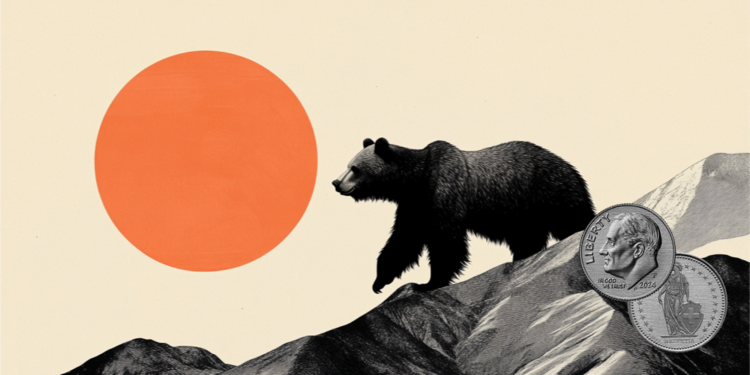- The USD/CAD moves up to about 1,3760 as the US dollar bounces with signals of progress in the commercial agreement between the US and the EU.
- The EU asked its national companies to provide details about investment plans in the USA.
- Investors expect GDP data from the first quarter of Canada on Friday, before the BOC monetary policy announcement next week.
The USD/CAD pair earns up to about 1,3760 during European negotiation hours on Tuesday. The CAD torque rises as the US dollar (USD) gains ground due to the de -escalation of commercial tensions between the European Union (EU) and the United States (USA).
The US dollar index (DXY), which measures the value of the dollar against six main currencies, jumps to about 99.35 from the monthly minimum of 98.70 registered on Monday.
During European negotiation hours, a Reuters report showed that EU officials have asked the Block companies that share details that indicate their investment plans in the USA. This indicated that the continent is making efforts to accelerate progress towards the closure of the commercial agreement with the US.
On Monday, commercial tensions between the EU and the US were also reduced and the expectations that both economies reach a possible bilateral agreement increased after the comments of the European Commissioner Maros Sefcovic in X, in which he affirmed that the EU commission remains “totally compromised with constructive efforts at a good pace towards an UE-EE-EE.UU agreement.” “We continue in constant contact,” he added.
Although the Canadian dollar (CAD) is low yield against the US dollar, it is negotiated in the rise against other main peers during the European negotiation hours on Tuesday.
Canadian dollar today
The lower table shows the change percentage of the Canadian dollar (CAD) compared to the main currencies today. Canadian dollar was the strongest currency against the Japanese yen.
| USD | EUR | GBP | JPY | CAD | Aud | NZD | CHF | |
|---|---|---|---|---|---|---|---|---|
| USD | 0.37% | 0.21% | 0.89% | 0.18% | 0.65% | 0.85% | 0.75% | |
| EUR | -0.37% | -0.18% | 0.49% | -0.19% | 0.21% | 0.38% | 0.36% | |
| GBP | -0.21% | 0.18% | 0.70% | -0.01% | 0.37% | 0.56% | 0.49% | |
| JPY | -0.89% | -0.49% | -0.70% | -0.68% | -0.24% | -0.11% | -0.14% | |
| CAD | -0.18% | 0.19% | 0.01% | 0.68% | 0.45% | 0.59% | 0.51% | |
| Aud | -0.65% | -0.21% | -0.37% | 0.24% | -0.45% | 0.09% | 0.03% | |
| NZD | -0.85% | -0.38% | -0.56% | 0.11% | -0.59% | -0.09% | -0.10% | |
| CHF | -0.75% | -0.36% | -0.49% | 0.14% | -0.51% | -0.03% | 0.10% |
The heat map shows the percentage changes of the main currencies. The base currency is selected from the left column, while the contribution currency is selected in the upper row. For example, if you choose the Canadian dollar of the left column and move along the horizontal line to the US dollar, the percentage change shown in the box will represent the CAD (base)/USD (quotation).
This week, the main trigger for the CAD will be the data of the GDP of the first quarter and the month of March, which will be published on Friday. The Canadian economy is expected to expand at a moderate rate of 1.6% in annualized terms, compared to the 2.6% previously informed. Next week, investors will pay close attention to the decision on interest rates of the Canada Bank (BOC).
US dollar FAQS
The US dollar (USD) is the official currency of the United States of America, and the “de facto” currency of a significant number of other countries where it is in circulation along with local tickets. According to data from 2022, it is the most negotiated currency in the world, with more than 88% of all global currency change operations, which is equivalent to an average of 6.6 billion dollars in daily transactions. After World War II, the USD took over the pound sterling as a world reserve currency.
The most important individual factor that influences the value of the US dollar is monetary policy, which is determined by the Federal Reserve (FED). The Fed has two mandates: to achieve price stability (control inflation) and promote full employment. Its main tool to achieve these two objectives is to adjust interest rates. When prices rise too quickly and inflation exceeds the 2% objective set by the Fed, it rises the types, which favors the price of the dollar. When inflation falls below 2% or the unemployment rate is too high, the Fed can lower interest rates, which weighs on the dollar.
In extreme situations, the Federal Reserve can also print more dollars and promulgate quantitative flexibility (QE). The QE is the process by which the Fed substantially increases the flow of credit in a stuck financial system. It is an unconventional policy measure that is used when the credit has been exhausted because banks do not lend each other (for fear of the default of the counterparts). It is the last resort when it is unlikely that a simple decrease in interest rates will achieve the necessary result. It was the weapon chosen by the Fed to combat the contraction of the credit that occurred during the great financial crisis of 2008. It is that the Fed prints more dollars and uses them to buy bonds of the US government, mainly of financial institutions. Which usually leads to a weakening of the US dollar.
The quantitative hardening (QT) is the reverse process for which the Federal Reserve stops buying bonds from financial institutions and does not reinvote the capital of the wallet values that overcome in new purchases. It is usually positive for the US dollar.
Source: Fx Street
I am Joshua Winder, a senior-level journalist and editor at World Stock Market. I specialize in covering news related to the stock market and economic trends. With more than 8 years of experience in this field, I have become an expert in financial reporting.





